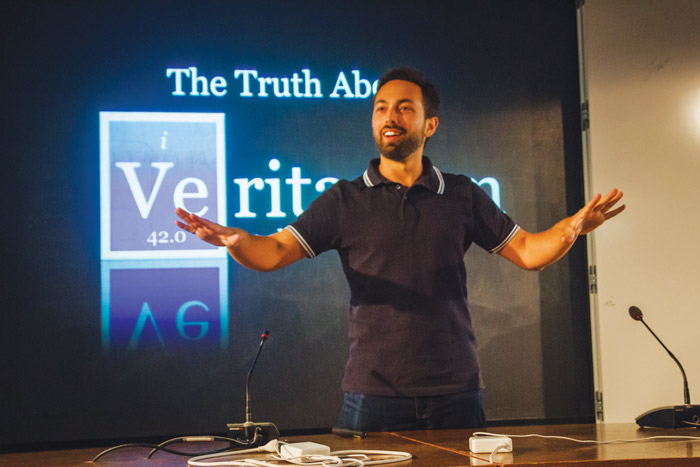“Where did I spend my 18th birthday?”
Derek Muller asked a packed Leacock 232 on Tuesday, Feb. 3. The question sparked confused laughter from the audience. However, this was only the start of a presentation that would continue to amuse.
Muller—the man behind the YouTube channel Veritasium—explores a huge range of topics through videos, including explanations of quantum entanglement and how a slinky falls in slow motion.
Muller spent his 18th in Montreal. Perhaps the more relevant question, though, was why he asked that in the first place.
“When you’re giving a presentation, you want to make the audience feel close to you,” he explained. This technique came into play in his talk, but is also evident in his online presence, where his videos have made him a familiar face to millions of people.
The path to YouTube fame is a winding one, however. Muller initially studied engineering physics at Queen’s University in Ontario, although he said the decision was difficult to make.
“I wanted to be a filmmaker, and I was also incredibly interested in science and engineering,” Muller explained. “The world itself is incredibly interesting—it’s hard to pick one thing.”
After graduating, Muller moved to Australia, and while he contemplated going to film school, he eventually pursued a Ph.D. in Physics Education. His thesis explored ways to make multimedia physics education more effective. The results that he produced seemed to oppose the traditional lecture model for physics education.
As it turns out, simply telling students facts about physics does little to improve their understanding. In fact, after students watched an expository educational video, they performed equally poorly on a physics test, but were more confident in their answers. At this point, he hadn’t shown them their results from the physics test.
“When I asked [the students] to describe the video […] they used words like ‘simple’ and ‘easy to understand,’” said Muller.
In contrast, students who watched a video, where an actor’s misinterpretation of Newton’s laws was clarified, found the simulation much more confusing. But when it came time to take the test after, they performed significantly better.
This effect was most pronounced in novices—students who’d had little to no exposure to physics beforehand.
After finishing his Ph.D., Muller starting working with a tutoring company. Although he was happy to be financially independent, he was also dissatisfied.
“I realized I’d been living a life of back up plans,” he said.
So he cut back his hours at the tutoring company and followed his passion for filmmaking to make YouTube videos about physics.
His strategy for educating people about physics built on his Ph.D. research by dispelling people’s misconceptions about physical phenomena.
“It was often while doing this kind of work that I realized how vast [the general public’s] ignorance is,” Muller said.
Initially, the videos remained relatively obscure, but as time went on the presence of Muller’s channel grew, aided by a number of videos that went viral. One in particular, a slow-motion shot of a slinky being dropped, even ended up on CBS.
Muller ended his talk the same way he began it—with a question.
“What is […] Veritasium?” Muller asked. “Is it a real element? For me, [Veritasium] was that moment in my life when I stopped pursuing backup plans. Know what you really want, and do that.








